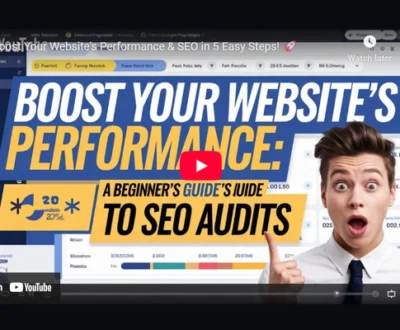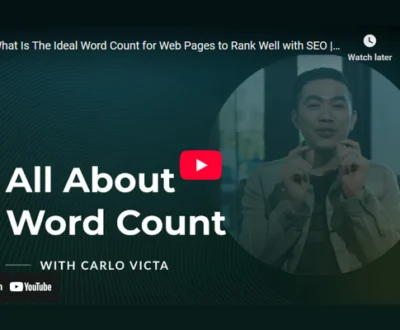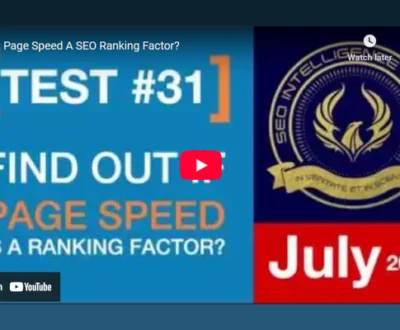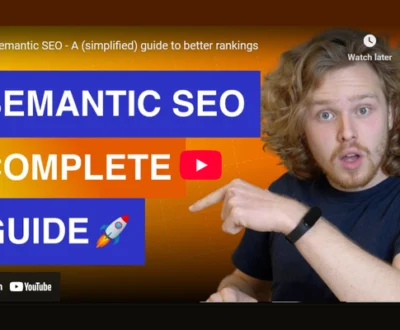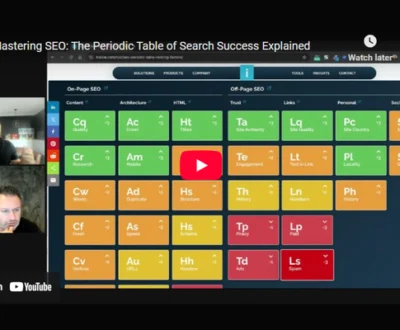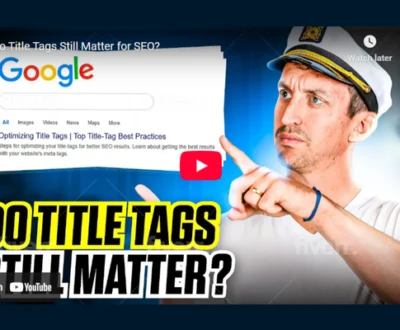When I write content that aligns with SEO best practices, I start with thorough keyword research to match user intent and identify gaps competitors miss. I focus on clear, engaging language with structured headings and concise paragraphs. Optimizing headlines and metadata helps boost click-through rates, while strategic keyword placement and multimedia enhance visibility and user experience. Regularly reviewing and updating content keeps it relevant and competitive. Exploring these elements further reveals how to maintain strong search rankings.
Key Takeaways
- Conduct thorough keyword research to align content with user intent and current search trends.
- Craft clear, engaging content using simple language, informative subheadings, and scannable lists.
- Optimize headlines and metadata by including primary keywords and using compelling, concise phrases.
- Integrate multimedia elements with descriptive alt text and relevant schema markup to enhance SEO.
- Regularly update and audit content based on performance metrics to maintain accuracy and search rankings.
Conducting Effective Keyword Research for Targeted Content
Why does keyword research matter so much in SEO content writing? Simply put, it helps me create content that matches what people are actively searching for.
By studying keyword trends, I can understand shifts in user interests and adjust my topics accordingly. This guarantees my content stays relevant and timely. Additionally, understanding the search intent behind keywords ensures the content precisely addresses user needs.
I also pay close attention to competitor keywords—analyzing what others in my niche rank for helps me identify gaps and opportunities to target terms they might’ve overlooked.
Using tools like Google Keyword Planner or Semrush, I gather data on search volumes and competition to prioritize which keywords will drive the most traffic.
This approach not only improves search engine rankings but also aligns my content with user intent, making it more useful.
Effective keyword research forms the foundation of a smart content strategy, allowing me to focus on topics that resonate with my audience and outperform competitors.
Crafting Reader-Friendly and Engaging Text
Although crafting content that ranks well is important, making that content easy and enjoyable to read is equally essential. To boost reader engagement, I focus on content clarity by avoiding complex phrasing and using everyday language. Short sentences help break down ideas, making the text more digestible.
I organize content with a clear structure, using informative subheadings that guide readers smoothly through the material. Incorporating white space with line breaks and varied paragraph lengths reduces visual clutter, enhancing readability. Lists and concise language also contribute to scannable content, allowing readers to find key points quickly.
I maintain an authentic tone and active voice to keep the writing professional yet approachable. Additionally, addressing readers’ potential questions and clearly presenting the value of the information encourages them to stay engaged. Using active verbs improves readability and helps maintain reader interest throughout the text.
Optimizing Headlines and Metadata for Higher Click-Through Rates
When optimizing headlines and metadata, I focus on striking a balance between keyword inclusion and reader appeal to increase click-through rates. Through careful headline analysis, I place the primary keyword near the beginning to guarantee clarity and relevance, while naturally weaving in secondary keywords for added context.
I avoid keyword stuffing to maintain readability and trust. For headlines, I use action verbs and power words within 55-60 characters, often incorporating numerals for specificity. This approach helps attract attention without vague phrasing.
Regarding metadata best practices, I match meta descriptions closely to headlines, placing keywords within the first 100 characters to reinforce relevance. I also optimize alt text and apply schema markup to improve rich snippet eligibility.
Testing different headlines through A/B experiments allows me to refine what resonates best with users. Monitoring competitor metadata and updating outdated terms guarantees the content stays current and effective in driving clicks.
Structuring Content for Maximum Readability and SEO Impact
Since content structure directly affects both readability and SEO performance, I prioritize organizing my writing to guide readers smoothly through the material. Establishing a clear content hierarchy helps break down information into digestible parts, while incorporating visual elements like bullet points and white space prevents visual overwhelm. This combination improves engagement and makes the content accessible to diverse audiences.
Here’s how I balance these factors:
| Content Hierarchy | Visual Elements | SEO Impact |
|---|---|---|
| Use of headings & subheadings | Bullet points & spacing | Enhances keyword clarity |
| Short paragraphs | Consistent font styles | Improves user retention |
| Logical flow | White space for clarity | Fosters better engagement |
Applying On-Page SEO Techniques to Enhance Visibility
To boost your page’s visibility, it’s important to place keywords thoughtfully, especially in titles, headings, and early content.
Optimizing metadata like title tags and meta descriptions helps search engines understand your page and encourages clicks.
Additionally, using internal links strategically improves navigation and signals the structure of your site to search engines.
Keyword Placement Strategies
Although keyword placement might seem straightforward, mastering it requires careful attention to where and how you incorporate keywords throughout your content.
I focus on keyword integration techniques that balance the natural flow of writing with strategic positioning, such as placing primary keywords in the introduction, headers, and conclusion. This approach reinforces relevance without overwhelming readers.
Additionally, I apply semantic search strategies by including keyword variations and related terms, which helps align content with user intent and search engine context. Using synonyms and long-tail keywords also broadens the reach while maintaining readability.
Ultimately, thoughtful keyword placement enhances visibility by signaling content relevance clearly and naturally, which improves both user experience and SEO performance. Staying mindful of these tactics guarantees content remains engaging and optimized.
Optimizing Metadata Elements
Integrating keywords effectively is just one part of optimizing your content for search engines.
Metadata analysis plays an essential role in enhancing your site’s visibility by helping search engines understand your content’s relevance to search intent. I focus on crafting clear, concise title tags with primary keywords, and writing unique meta descriptions that accurately reflect the page’s purpose.
Using structured data adds context that can improve how search results display your content. To keep things streamlined, I rely on tools like RankMath or Yoast SEO to review and implement metadata correctly.
Here are three key tips to optimize metadata elements:
- Align metadata with user search intent to increase relevance
- Keep meta descriptions unique and under 160 characters
- Use compelling language and keywords in title tags to boost click-through rates
Effective Internal Linking
When you build a website, effective internal linking becomes vital for enhancing both user experience and search engine visibility.
I focus on linking strategies that connect related pages, helping search engines crawl and understand my site’s structure better. Using descriptive, keyword-rich anchor text is essential; it clearly tells both users and search engines what the linked page is about.
However, I avoid generic phrases like “click here” and overusing exact match keywords to keep the links natural and informative.
I also organize content in topic clusters, linking central pages to subtopics, which strengthens relevance and supports long-tail keywords.
Regular audits guarantee my links remain crawlable and error-free.
Leveraging Multimedia and Schema Markup for Better User Experience
Since multimedia elements like images, videos, and interactive content can greatly boost user engagement, I’ve found that combining them with well-implemented schema markup creates a more informative and accessible experience.
Multimedia integration enhances content relevance and user interaction, while schema effectiveness helps search engines understand and display this content better, improving visibility. For example, optimized images with descriptive filenames and alt text support SEO, and videos with transcripts and captions increase accessibility.
Using the right schema types, such as FAQ or product schema, further enriches search listings with rich snippets, attracting clicks.
To maximize the benefits, focus on:
- Embedding high-quality multimedia closely aligned with your text
- Adding detailed, accurate schema markup to describe your content
- Including transcripts and captions to improve accessibility and SEO
This approach not only boosts engagement but also supports search engines in delivering richer, more useful results to users.
Monitoring and Updating Content to Sustain Search Engine Rankings
To keep your search engine rankings steady, it’s important to track how your content is performing by monitoring key metrics like traffic and keyword rankings.
Identifying outdated information lets you spot content that needs revising to stay relevant and useful.
Content Performance Tracking
Although creating quality content is essential, consistently monitoring its performance plays an equally important role in maintaining search engine rankings.
I rely on content analytics and performance metrics like organic impressions, click-through rates, and average session duration to evaluate how well my content connects with the audience. Using tools such as Google Search Console and Google Analytics, I track these metrics regularly to identify areas needing improvement.
Here are three key steps I follow:
- Analyze traffic sources and user engagement to understand content effectiveness.
- Conduct monthly reviews of performance metrics to spot trends and issues.
- Adjust titles, meta descriptions, and keyword usage based on data insights.
Identifying Outdated Information
Monitoring content performance provides valuable insights, but it’s equally important to identify when information becomes outdated. I use content audits to spot pages with outdated statistics or declining engagement.
Tools like Google Analytics reveal traffic drops, while Google Search Console highlights rising bounce rates or ranking losses. These signs often point to content that no longer meets user needs or search engine standards.
I also pay attention to user feedback, which can flag outdated information that analytics might miss. Regularly reviewing content libraries helps me detect obsolete facts or links before they harm SEO.
Implementing Regular Updates
When I regularly update content, I keep my website competitive in search engine rankings and guarantee it stays relevant for users.
A well-planned content refresh involves ongoing trend analysis to spot shifts in audience interests and search behavior. I focus on updating meta information, consolidating overlapping content, and making sure all data is current.
Monitoring user behavior and SEO metrics helps me fine-tune updates for better engagement and ranking.
Here are three essential steps I follow:
- Conduct trend analysis to identify evolving topics and keywords
- Refresh meta titles, descriptions, and headings to reflect new information
- Consolidate similar posts to avoid duplicate content and improve clarity
This approach makes certain content remains accurate, valuable, and optimized for search engines over time.
Frequently Asked Questions
How Often Should I Perform a Comprehensive SEO Audit on My Website?
I recommend setting your audit frequency based on site size and competition, using an audit checklist each time. For most, quarterly thorough SEO audits balance detail and efficiency well, but adjust if your site’s more complex or dynamic.
What Tools Help Track Competitor SEO Strategies Effectively?
When I do competitor analysis, I rely on tools like Moz Pro, Ahrefs, and SEMrush for effective keyword tracking. They help me spot keyword gaps and monitor rivals’ strategies to stay ahead in SEO efforts.
How Can I Measure the ROI of My SEO Content Efforts?
I measure the ROI of my SEO content efforts by tracking content engagement and using conversion tracking tools like Google Analytics. This helps me see which content drives leads or sales, ensuring my SEO investments pay off effectively.
What Role Do Social Media Signals Play in SEO Rankings?
Did you know 70% of marketers say social media boosts SEO? I see social media engagement metrics indirectly enhancing rankings by signaling content relevance and increasing visibility, which helps search engines trust and promote your site more effectively.
How Do Voice Search Trends Affect SEO Content Creation?
I’ve noticed voice search pushes me to use conversational keywords and focus on mobile optimization. Plus, local search matters more now, so I create content that answers real questions, making it easier for users to find nearby solutions.
Final Thoughts
Writing SEO-friendly content is like planting seeds in fertile soil; with careful research, clear structure, and ongoing care, your work can grow steadily in search rankings. By focusing on targeted keywords, engaging readers, and optimizing every element, you guarantee your content not only reaches your audience but also holds their attention. Remember, SEO is a continuous process—monitor and update your content regularly to keep it thriving and relevant in the ever-changing digital landscape.
Windee Tan is a seasoned SEO Specialist with over a decade of experience helping businesses grow their organic visibility through data-driven strategies. He specializes in technical SEO, content optimization, and local search, with deep knowledge of tools like GA4, GSC, SEMrush, and Screaming Frog. Windee is passionate about translating complex SEO insights into practical tactics that drive real-world results. When he's not auditing sites or crafting keyword strategies, he’s exploring the latest trends in AI, digital marketing, and productivity.
About this blog
We are a digital marketing company with a focus on helping our customers achieve great results across several key areas.
Request a free quote
We offer professional SEO services that help websites increase their organic search score drastically in order to compete for the highest rankings even when it comes to highly competitive keywords.
Subscribe to our newsletter!
More from our blog
See all postsRecent Posts
- Writing Clear Calls to Action That Boost On-Page SEO 21 August 2025
- Why Word Count Still Matters in On-Page SEO Today 20 August 2025
- Why Site Speed Is Critical for On-Page SEO Success 19 August 2025


